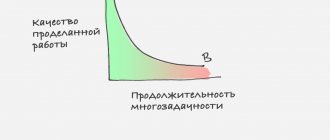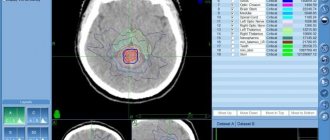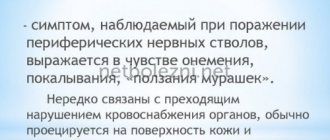Trembling throughout the body, arising from nervousness, is familiar to absolutely all people on the globe. At least once in a lifetime, even in childhood, every person trembled with excitement, fear, and excitement.
This reaction to overexcitation is so common and normal that it would not be worth talking about if it did not become a real scourge for people who are constantly in an anxious state.
Symptoms of trembling due to nervousness
Psychogenic shaking can manifest itself as follows.
- A person feels their arms, legs, abdomen, buttocks, back, and sometimes the whole body simultaneously shaking and vibrating. In this case, trembling can be both noticeable from the outside and felt only internally.
- If it starts in one part of the body, it can gradually spread throughout the body. The whole body becomes “nervous”, it vibrates. And the vibration can come from inside, or maybe from outside. Sometimes it occurs all over the body at once.
- The condition often worsens after sleep, whether it is a long night's rest or a short nap during the day. The period of going to bed, the desire to relax and rest can also serve as triggers for an attack.
- Nervous tremors can develop against a background of severe anxiety and panic. Or it can appear as if out of the blue, without obvious excitement.
- The intensity of the symptom can vary from internal trembling barely noticeable to the patient himself, to obvious shaking that is visible to others.
- An attack often has a wave-like course: it goes away, then comes back in a wave.
- Nervous tremors can occur only occasionally, or can plague a person throughout the day. Its intensity can vary from hour to hour, from day to day, from month to month. Sometimes a symptom may go away completely for several years, and then return again.
- Often the symptom is complemented by other bodily manifestations of anxiety. It could be palpitations, nausea, abdominal pain - anything. A state of intense psychogenic vibration, especially one that is noticeable externally, is usually accompanied by obvious excitement, fear, and often panic.
- Sometimes, during an attack, a person can stop trembling by saying something soothing to themselves and/or squeezing and relaxing their muscles. But sometimes there is no way to overcome the vibration. Both options may be characteristic of the same patient. And they can occur during the same attack, depending on the intensity of its waves.
- For some people, the trigger for development may be overexertion of certain muscle groups. But more often the occurrence of the symptom has nothing to do with physical activity.
Pulsation in the abdomen
Colitis
Gastritis
Atherosclerosis
18852 March 10
IMPORTANT!
The information in this section cannot be used for self-diagnosis and self-treatment.
In case of pain or other exacerbation of the disease, diagnostic tests should be prescribed only by the attending physician. To make a diagnosis and properly prescribe treatment, you should contact your doctor. Pulsation in the abdomen: causes of occurrence, what diseases it occurs with, diagnosis and treatment methods.
Definition
Normally, pulsation in the abdomen can be felt after a long stay in an uncomfortable position, playing sports, or when exposed to factors that irritate the nervous system. There is no cause for concern if the pulsation goes away on its own after a short rest on your back.
However, the sensation of a pulse in the abdomen can be a symptom of various diseases of the organs and systems of the abdominal cavity. The abdominal cavity is a container for many organs, such as the stomach, liver, gall bladder, and intestines; Important blood vessels (abdominal aorta) and lymphatic vessels and nerve bundles are located here.
Failure in the functioning of at least one of the organs that make up the abdominal cavity leads to functional disorders of varying degrees of severity.
Most often, it is impossible to independently identify the cause of pulsation in the abdomen; to do this, you need to consult a doctor, since in addition to “harmless” indigestion, the cause can also be more serious life-threatening conditions. Types of pulsation in the abdomen
Pulsation in the abdomen can vary in location: above the navel, in the solar plexus, to the right or left of the center of the abdomen.
Possible causes of pulsation in the abdomen
- Digestive disorders.
- Pregnancy.
- Features of the menstrual cycle.
- Pathology of the abdominal aorta.
- Tumors of the abdominal organs.
By indigestion
we mean pathologies of the stomach, intestines, pancreas of various natures and diseases of the biliary tract. Most often, gallbladder diseases do not manifest themselves as pulsations in the abdomen; the symptoms of these conditions are characterized by aching pain in the right hypochondrium, which in some cases becomes acute and unbearable (for example, with biliary colic), yellowing of the sclera and skin, etc.
The clinical picture of gastritis
include heaviness in the abdomen, pulsation in the epigastric region (the space located directly under the xiphoid process and which is a projection of the stomach onto the anterior abdominal wall), heartburn, nausea, in some cases vomiting, and loss of appetite.
When overeating due to overstretching of the stomach walls, pulsating sensations in the abdomen may also appear.
Colitis
is manifested by inflammation, constipation, diarrhea (or their alternation), the appearance of blood or mucus in the stool, discomfort and unpleasant sensations in the abdomen, weakness, and lack of appetite.
Provoking factors for colitis can be poor-quality food and water, as well as wearing tight, uncomfortable clothing that puts pressure on the intestines. Pulsation in the abdomen can appear in diseases such as Crohn's disease
(a chronic inflammatory disease of the gastrointestinal tract, characterized by damage to the epithelium of the intestinal tube and impaired digestion and absorption of nutrients) and
intestinal tumors
. With intestinal tumors, the following nonspecific symptoms are possible: upset stool, weight loss, decreased appetite up to aversion to food, a significant increase in abdominal volume.
The clinical picture of intestinal obstruction is as follows: impaired passage of feces and gases, pain and pulsation in the abdomen, in some cases there is a feeling of increased peristalsis, nausea, vomiting. The appearance of these symptoms in combination or separately requires immediate medical attention. Lack of proper treatment for the development of intestinal obstruction can cause severe complications and even death.
During
pregnancy
, as the baby develops and grows, the uterus enlarges. This process is accompanied by pressure on surrounding organs - the intestines, the bladder, which is manifested by frequent urination, pulsation in the abdomen, heartburn (in late pregnancy, which is associated with increasing intra-abdominal pressure).
Sometimes a woman mistakes the movement of the fetus for a pulsation in the abdomen. In the prenatal period, in the later stages, pulsating sensations in the abdomen may appear due to fetal hiccups. This condition is not pathological unless it is permanent.
During
menstruation,
the endometrium, the cells lining the inside of the uterine cavity, is renewed. During this period, the uterus contracts in waves, which in some women is accompanied by pain, and in others by a feeling of pulsation in the abdomen. This condition is physiological and does not require specific treatment. In cases where a woman acutely experiences the above symptoms during menstruation, which disrupts the usual rhythm of her life, it is advisable to consult a doctor to select optimal therapy.
Aorta
is the largest unpaired vessel in the human body. It is part of the systemic circulation, the main function of which is to provide all organs and tissues with oxygen-rich blood. The aorta is usually divided into three sections: the ascending aorta, the aortic arch and the descending aorta (divided into thoracic and abdominal).
The abdominal aorta supplies blood to the stomach, intestines, kidneys, spleen, as well as the testes in men and ovaries in women.
An aneurysm is a pathology of the vessel wall in which a peculiar protrusion, similar to a sac, is formed on it. The presence of an abdominal aortic aneurysm may be manifested by pulsating sensations in the abdomen. Abdominal pain is often absent or tolerable, but attacks similar to radiculitis or exacerbation of inflammation of the pancreas are also possible. Men over 60 years of age are more often affected, and most of them are long-time smokers. When the diagnosis is made late, the aortic wall becomes thinner, which can lead to rupture of the aneurysm during physical stress or even at rest.
Doctors include congenital pathology of connective tissue, diseases of an inflammatory nature (for example, aortitis), non-infectious (specific) inflammation (for example, Takayasu's disease), penetrating wound or blunt trauma of the abdomen, hypercholesterolemia and atherosclerosis (characterized by the deposition of cholesterol plaques in the vessels) as the causes of the development of aortic aneurysms. , which makes their walls less resistant to the effects of blood pressure).
Which doctors should I contact if I have pulsation in my abdomen?
If indigestion occurs, you should contact or. In cases where the disorder is infectious in nature, an infectious disease specialist will provide assistance.
In case of digestive disorders, accompanied by profuse vomiting, repeated loose stools, severe dehydration develops - this condition may require hospitalization.
Treatment of abdominal aortic aneurysm is usually performed by a surgeon.
During pregnancy, women are observed.
Diagnostics and examinations for pulsation in the abdomen
To diagnose gastritis or colitis, gastro- or colonoscopy (in some cases, studies are carried out with sedation) and ultrasound of the abdominal organs to detect tumors in the abdomen are widely used. When conducting endoscopic examinations, it is possible to take material to determine the cellular characteristics of the formation, which determines the tactics of further treatment.
The main cause of nervous tremors in the body
The main reason for the nervous vibration of the body is its preparation for “fight and flight.” In a state of anxiety, the body mobilizes internal resources so that it has the opportunity to enter into battle or escape. This is the oldest animal survival mechanism.
If anxiety is short-term, then defensive behavior does not last long. The body will turn on the stress response. The muscles will tense and possibly begin to tremble. But as soon as the threat disappears, everything will pass.
But if a person is in a state of chronic anxiety, sometimes without noticing it, his body is constantly in a state of semi-preparedness for fight and flight. And at any moment this half-readiness can turn into readiness. And obvious symptoms of overexertion will appear, including nervous tremors.
Moreover, the transition from a state of semi-readiness to overt defense can occur both against the background of increasing excitement, and seemingly out of the blue. For example, I went to bed. I tried to relax. But it turned out differently.
Other causes of psychogenic tremors throughout the body
Chronic anxiety, leading to constant overstrain of the body, is the main reason for the development of nervous tremors. But there are other less significant reasons. Usually they simply complement the main one - constant preparation of the body for danger.
Internal vibration may intensify against the background of:
- consuming large amounts of caffeine;
- lack of sleep;
- dehydration;
- hyperventilation.
Excess caffeine, lack of sleep, and dehydration, in turn, can be consequences of a chronic anxiety state, enhancing its bodily manifestations. Hyperventilation almost always occurs with an anxiety disorder and worsens its physical symptoms.
How to get rid of the feeling of trembling and vibration in the body
Common situations where the body feels trembling or vibrating can cause a person to fear for their life or physical health. Yes, in some cases such sensations may indicate the presence of a neurological pathology. For example, with Parkinson's disease, trembling is also felt, but it has a physical manifestation in the form of shaking fingers or hands. In anxiety states, physical manifestations can also be observed. Moreover, the stronger the fear and anxiety, the more noticeable the tremor, and the sensations of trembling and vibration will be much stronger than in the normal state.
In order to get rid of the sensation of trembling, vibration or buzzing, you need to undergo restorative neurometabolic therapy of the nervous system to restore the metabolism of the nervous tissue.
How do the sensations of trembling and vibration manifest themselves in the body?
Because these sensations can lead to physical manifestations that manifest as visible trembling, twitching, tics, and even “shaking.” People tend to feel scared, and the anxiety can progress to generalized anxiety disorder. Such mental conditions are much more difficult to treat, like any chronic disease.
At such moments, it is difficult for a person to concentrate, performance and memory decrease, and attention suffers. When your thoughts concentrate on unpleasant sensations in your body, headaches and muscle pain appear. Problems with the gastrointestinal tract may appear, and difficulties in sexual relationships may arise.
If you delay in solving the problem, the disorder will develop and panic attacks may begin and obsessive thoughts may form. People around you may begin to notice that something is happening to you. Against this background, depression can also form. Problems can snowball, as can the variety of symptoms.
How to quickly get rid of nervous tremors at home
Drink some water
Dehydration can cause shaking. People who are anxious are more likely to become dehydrated, as they may experience increased urination and/or sweating. However, in most cases, a few sips of water or tea have not so much a hydrating effect as a calming one.
Quite often the question arises, what is better to drink - hot or cold, just water or some other drink? The best thing to do is drink something that calms you down. For some it might be a glass of cold water, for others it might be a cup of hot cocoa.
Move over
If the muscles are trembling and require activity, they need to provide it. So get moving.
Exactly how you move depends on your preferences. Some people just like to walk around. Some people find rotational movements of their arms more helpful.
Physical activity can be anything, but not exhausting. Walk, but don't run. Rotate your arms, but don't push up.
Slow down your breathing
During preparation for “fight and flight,” a person’s breathing becomes more active. Hyperventilation occurs, which aggravates all the physical symptoms of anxiety, including nervous trembling.
So try to slow down your breathing. To do this, take a normal breath (not too deep), slowly count to 4 and only then exhale. Count to 4 again and only then inhale.
Continue breathing in this rhythm until you feel better.
Have trembling in certain parts of the body
During attacks, many people are frightened by the fact that they seem to lose control over their body: their arms and legs tremble, their teeth chatter, and nothing can be done about it. The growing fear of loss of control intensifies the nervous trembling.
Indeed, it can be difficult to quickly stop trembling throughout the whole body. But you can always take control of its individual sections. For example, give an order not to shake your hands or not twitch your thigh muscles.
Often the realization that the shaking is, in principle, controllable is reassuring. And thus helps relieve an attack.
Let go of the situation
The easiest and most effective way to stop shaking is to allow yourself to shake. The more you internally resist the shaking, the more the muscles tense and the stronger they contract.
Therefore, the most effective method of dealing with nervous tremors is to allow it to happen. Give your muscles the opportunity to do the work they need, and they will quickly relax. And the tremor will stop.
INFLUENCE OF WHOLE BODY VIBRATION ON THE MECHANICAL BEHAVIOR (PROPERTIES) OF SKELETAL MUSCLE.Bosco C. 1,2,3, M. Cardinale, 4, R. Colli 5, J. Tihanyi 3, SP von Duvillard 6, A. Viru 7
1.University of Rome Vergata, Fondazione “Don Gnocchi”, Rome, Italy 2 Department of Biology Phys. activity, University of Jyvaskyla, Finland 3 Department of Biomechanics, Hungarian University of Physics. Activity, Budapest, Hungary 4 Study and Research Center, Italian Handball Federation 5 Study and Research Center Italian Cycling Federation 6 HPER Department, University of North Dakota, Grand Forks, USA 7 Exercise Biology Institute, University of Tartu, Estonia
Key words: vibration, muscle mechanics, muscle strength
Send your letters to: Carmelo Bosco Ph.D. C/o Societa Stampa Sportiva Via G.Guinizzelli,56 00152 Roma,Italy Phone+39335283024;+393482680265 Fax: + 39 6 5806526 E-mail: [email protected] Quipo.it
SUMMARY The purpose of this work was to investigate whole body vibration (WBV) on the mechanical behavior (properties) of human skeletal muscles. For this purpose, 14 physically healthy and active people were selected and randomly divided into an experimental group (EG) and a control group (CG). Members of the EG were treated for 10 days with 5 sessions of vertical sinusoidal vibration, each lasting up to 2 minutes for a total of 10 minutes per day. Participants in the control group were asked to maintain normal activity levels, avoid jumping and strength training, and were tested with resistance jumping exercises at the beginning and end of treatment. The results showed a clear and statistically significant increase in the EG in the height of the best jumps (1.6%, P<0.01), the mechanical strength of the best jump (3.3%, P<0.5) and the average jump height in 5 seconds. Cj (continuous jumping) (12%, P<0.01). In contrast, no statistically significant indicators were observed in the CG. Therefore, it has been hypothesized that exposure to whole body vibration treatment induces rapid biological adaptations related to neuropotentiality.
INTRODUCTION |Adaptation to the stimulus from physical training is associated with modification caused by repetition of daily physical exercises that are specific to the movements performed [12]. The response to strength training appears to be mediated by both neurogenic and myogenic (muscle) factors [22]. The first phase of adaptation is characterized by an improvement in neurofactors, while myogenic factors become more significant as adaptation continues for more than a few months (eg [20]). Increases in explosive strength (eg, jumping ability) and corresponding biological adaptations to specific exercise stimuli are still not entirely clear. Gravity usually provides the bulk of the mechanical stimulus responsible for the development of muscle structure in everyday life and during physical training. It should be remembered that specific strength and explosiveness training programs are based on physical exercises performed with a rapid and sharp (strong) change in gravitational acceleration (increase in gravity) [8]. In this regard, modeling of conditions of increased severity (wearing vests and additional loads) was used to increase the explosive muscular strength of a person [5,6]. On the other hand, changes in gravitational conditions [conditions for the use of weights] can also be caused by mechanical vibrations applied to the entire body. Thus, in light of the above observations, it has been suggested that the application of whole body vibration to physically active individuals may influence the mechanical properties of the leg extensor muscles.
METHODS 14 people voluntarily took part in the study; they were physically active and participated in sports teams with training programs 3 times a week. The participants were not involved in strength and explosiveness training, but regularly took part in tactical and technical training programs in accordance with training practices in the given sports discipline (handball and water polo). They were equally divided into 2 groups – experimental (EG) and control (CG). Each participant was familiarized with and instructed in accordance with the study protocol and signed a consent form approved by the Ethics Committee of the Italian Society of Sports Sciences to participate in the experiment. Participants with a history of fractures or bone injuries were excluded from the study, as were those who were underage. In table Figure 1 shows the physical characteristics of the participants.
Procedures: Anthropometric measurements (height and weight) were recorded along with participants' age. This phase was followed by 10 min. Warm-up consisting of riding an exercise bike for 5 minutes. at a speed of 25 km/h on a bicycle ergometer (Newform spa, Ascoli Piceno, Italy), and 5 min. stretching the quadriceps and triceps muscles of the calf. After warming up, participants performed the following jumping exercises: counting motion jumps (CMJ) and 5 sec. continuous jumps (5s Cj). Jump time (tf) and contact time (tc) [i.e. contact with the surface from which the jump was made] of each single jump was recorded (fixed) on a platform with resistance [4], connected to a digital timer (accuracy ± 0.001 s) (Ergojump, Psion XP, MA.GI.CA Rome, Italy). To avoid unmeasurable work, horizontal and lateral movements were kept to a minimum, with the loaded arms resting on the hips above the platform (height in meters); measurements were made from time in jump (tf in seconds) using the laws of ballistics:
h = tf2 • g • 8-1 (m) (1)
where g is the acceleration (intensification) of gravity (9.81 m/sec-2). During the continuous jumping exercise, participants were required to make maximum effort in their jumps while minimizing knee angle displacement during landing. From the tf and tc records, the average mechanical force (AP) and the average elevation of the center of gravity (AH) were calculated for the entire 5-second time of continuous jumping. Of all 5 sec. continuous jumps, the best result was selected and the maximum mechanical force (PBJ) and the highest rise in the center of gravity (HBJ) were calculated using the equation derived by Bosco et al. [4]:
AP = Tf • Tt • 24.06 · (Tc)-1 (W • kg bm-1) (2)
where P is the mechanical force per kilogram of body weight, Tf is the sum of all time indicators in the jump, Tt is the total working time (5 seconds), Tc is the sum of all landing contact time indicators. Average height during 5 sec. continuous jumps and HBJ were calculated using Formula 1.
Measurement reproducibility:
The reproducibility of the mechanical force test (5 sec.CJ) and CMJ was high, respectively, r (compliance) = .95 and r = .90 [4,27].
Statistical methods: Traditional statistical methods used included mean, standard deviation, and Student's t-test. The level of statistical significance was set at p < 0.5.
Healing procedures:
All participants were subjected to whole body vertical sinusoidal vibration (WBV) using a device called GALiLEO 2000 (Novotec, Pforzheim, tiermany). The vibration frequency used in the study was set to 26 Hz (displacement = 10 mm, acceleration = 27 m/s-2). Participants were exposed 5 times for 90 s with a 40 s break between each session. This procedure was repeated for 10 days, with each day adding 5 seconds to each session to a total level of 2 minutes per position occupied by the participant. After 10 days, participants in both groups were tested again and the data were analyzed statistically.
Type of treatment used. The first application of vibration was performed in a standing position with the toes on the vibration platform. The second application of vibrations was performed while the participant in the experiment was in a half-bent position. The third application of vibrations was carried out when the feet on the outside were in a rotational position on the vibration platform. The knee flexion angle was predefined at 90° flexion. The fourth application of vibration was carried out while the subjects were in a standing position on their leg on the right side of the vibration platform with a knee flexion angle of 90°. The last, fifth application of vibrations was carried out when the subjects were in a standing position on the other leg on the left side of the vibration platform with a knee flexion angle of 90°. During the 4th and 5th procedures, subjects were allowed to balance themselves using a handrail located above the platform. During all treatment procedures, the subjects were wearing gymnastic shoes to avoid bruising. The EG group was tested with WBV for 10 days, the CG group was not tested during the experiment, and participants in this group were asked to maintain their usual activity. Testing procedures were prescribed at the beginning and end of the experiments for both the EG and CG groups. RESULTS After approximately 2 weeks of the mechanical and tactical training program, CG subjects, as expected, showed no changes in any of the mechanical or anthropometric parameters studied (P<0.5). The jump height in the CMJ remained the same in the EG after 10 days WBV (Table 2). Conversely, such treatment showed a pronounced and statistically significant (P<0.5) increase in HBJ (Fig. 1) and PBJ (Fig. 2). In addition, the average height during 5sec – CJ also improved in the EG group, showing a statistically significant difference (P<0.01) (Table 2). On the other hand, the average force developed during 5 sec CJ did not show statistically significant changes after treatment (Table 2).
DISCUSSION. As expected, a program of regular tactical and mechanical training for less than 2 weeks did not cause any changes in mechanical properties and anthropometric parameters in the CG. This is not surprising, since no changes in jumping performance were also noted after 4 weeks in physically active subjects [14], or in volleyball players [2]. In contrast, a significant improvement in the studied neuromuscular characteristics was observed after exposure to WBV in the EG group. A significant increase in parameters was noted in HBJ (Fig. 1), PBJ (Fig. 2) and average jump height during 5 sec CJ. It should be remembered that during the continuous jump test [4], the average jump height had a higher significance and sensitivity than AP in athletes of different specialties [28] or when performing the effect of creatine supplementation [9]. In addition, no changes in the CMJ were observed after vibration exposure in the EG group. Obviously, the results are controversial and contradictory. However, a reasonable explanation can be found by analyzing the mechanical properties of the leg muscles during CMJ and 5sec CJ. Indeed, both exercises are characterized by the so-called stretch-contraction cycle (SSC). This means that before the concentric work (launch phase), the leg extensor muscles are actively extended (eccentric phase) in both exercises. However, neuromuscular activation with CMJ differs from that with 5sec CJ. CMJ is characterized by a high angle displacement and low traction speed (3-6 rad•sl) [3], while 5 sec CJ is performed with a fast traction speed (10-12 rad•sl) and with a small change in angle [7].
This means that at 5 sec CJ, the leg extensor muscles are subject to rapid extension, which can cause a latent process of triggering a dynamic response, increasing the primary afferent issue. This position is supported by studies by Bosco et al [3], who showed that during the eccentric phase of a single jump exercise (similar to 5s CJ), EMG activity was high, and was compared with maximal concentric baseline movements. Thus, there is the possibility of increased neuropotential through either the spinal or cortical reflex. On the other hand, it is likely that the CMJ is not a suitable activity to elicit the stretch reflex, since high EMG activity has not been recorded during the stretch phase (e.g. [3]).
Based on all these inferences, it is likely that the effect of WBV treatment induces biological adaptations related to neurodevelopment. Thus, it can be argued that the biological mechanism caused by vibration treatment is similar to the effect caused by explosive strength training (jumping and skipping). In fact, this assumption is consistent with the knowledge that it is primarily the specific components of the neuron and its proprioceptive feedback mechanism that are the first structures to be affected by specific training [2,14].
High-load traction training may improve the potential of the traction reflex and increase the exhaustion threshold of the Golgi tendon organs (GTO). This potential will certainly further increase the ability to engage more units (structures) of movement during the eccentric phase [2]. In addition, there are several ways in which explosive strength training can influence neuroactivation, for example by increasing the synchronization activity of movement units [21]. It is also impossible to exclude an improvement in synergistic muscles that are simultaneously involved in contraction, and increased inhibition of antagonist muscles. In any case, whatever the intrinsic mechanism may be that increases neuromuscular activity after specific explosive strength training, it is likely that vibration treatment will certainly enhance the proprioceptor “feedback” mechanism, since it is fully engaged and activated during 5 sec CJ exercises, being increased after WBV. On the other hand, the lack of changes observed during the GMJ test and after WBV treatment suggests that the proprioceptor feed-back mechanism is not strongly involved in CMJ. In reality, this exercise is strongly influenced by the voluntary contraction capacity and type of fiber composition of the extensor muscles of the leg [1]. However, there is no doubt that the stretch reflex plays an important role in the regulation of muscle inflexibility (IS), and that fusiform muscle fibers and GTO actively function in the regulation of muscle length and tension [16]. Therefore, it can be hypothesized that WBV treatment may negatively influence neuromuscular functions and properties that regulate muscle stiffness through regulation of length and tension. During vibration, the body and skeletal muscles undergo minor changes in muscle length. Facilitation of spinal reflex excitation was induced through vibration of the quadriceps muscle [11]. The idea that vibration can cause excitation of blood flow through short spindle fibers - connections of motor neurons (motoneurons) in the general influx of motoneurons was also proposed by Lebedev and Peliaksv [IX], who pointed out this possibility. Vibration has also been shown to allow alpha motor neurons to pass through the loop, producing force without reducing movement speed [25]. Burke et al. [101] suggested that the vibration reflex acts primarily predominantly or only on alpha motor neurons, and that it does not use the same cortical efferent pathways as occurs during voluntary contractions. . In addition, the results of Kasai et al. [17] indicate that vibration-induced activation of fusiform muscle fiber receptors occurs not only in the muscle where vibration is applied, but also in nearby muscles. Mechanical vibration (10–200 Hz) applied to the abdominal muscle or tendon can induce a reflex muscle contraction (eg [13]). This response was called the tonic vibration reflex (TVR). It is unknown whether it can be caused by low WBV frequency (1–30 Hz), although this has been suggested as a possibility [26].
Finally, it should be remembered that not only nerve tissue, but also muscle tissue can be affected by vibration [23]. In fact, exposure to vibration for 5 hours daily for 2 days at 2 different frequencies is sufficient to cause an increase in slow and fast fibers in rats [24].
In this study, no neurogenic potentials or changes in muscle morphological structure were demonstrated, as neither EMG recordings nor muscle biopsy specimens were collected. However, the increase in mechanical properties during 5 sec CJ suggests with some confidence that neurogenic adaptation arose as a response to the vibration procedure. Even if the intrinsic mechanism of the adaptive response of neuromuscular functions to WBV could not be explained, the effectiveness of the stimulus was found to be of relatively significant importance. The response (adaptive response) of human skeletal muscles to reproduced actions of increased severity (1.1g), applied only for 3 weeks, caused a sharp increase in the neuromuscular functions of the extensor muscles of the leg [6]. Constant centrifugal force (2g) for 3 months [19] caused a change in muscle fiber type. In this experiment, the total duration of WBV application was not very long (only 100 minutes), the change in the gravitational field was quite moderate (2.7 g). An equivalent duration and intensity of the training stimulus can only be achieved by performing 200 single jumps from 60 cm 2 times a week for 12 months. In reality, the time spent on each single jump is less than 200 ms, and the acceleration developed can hardly reach 27 g [8]. This means that you would have to stimulate the muscles for 2 minutes per week to get a total of 108 minutes for the year, which is almost equal to the total time of vibration used by the subjects of the EG group.
What to do at home to prevent an attack of nervous tremors
The main symptomatic prevention of an attack is associated with relaxation of the muscles, which in an anxious person are always in increased tone.
When an attack has already begun, doing muscle relaxation exercises is ineffective. And often impossible. But as a means of prevention, such techniques help.
You can accept:
But what works best is the progressive muscle relaxation technique, which makes it possible to remove excess tone from all major muscle fibers at once.
Any other techniques and procedures that promote relaxation also work: massage, hot shower or warm bath, acupuncture, yoga, etc.











